Online advertising has become indispensable for any business looking to grow its customer base and boost revenue. However, with so many platforms available, it can be challenging to determine the most effective solution.
While Google Ads has traditionally been the go-to choice for many businesses, it is not the only available option.
In this article, we will go through the best eCommerce advertising platforms to choose in 2025 and provide insights on how you can leverage them to make the most of your digital marketing campaigns.
Important eCommerce Statistics for 2025
Before we start, let's dig a bit into the landscape of eCommerce.
- The projected growth rate for eCommerce sales in 2024 stood at 10.4%; this shows the growing trend for online purchases. As the proportion of retail purchases conducted through online channels is expected to reach 24% by 2026, the anticipated rise in sales is hardly surprising.
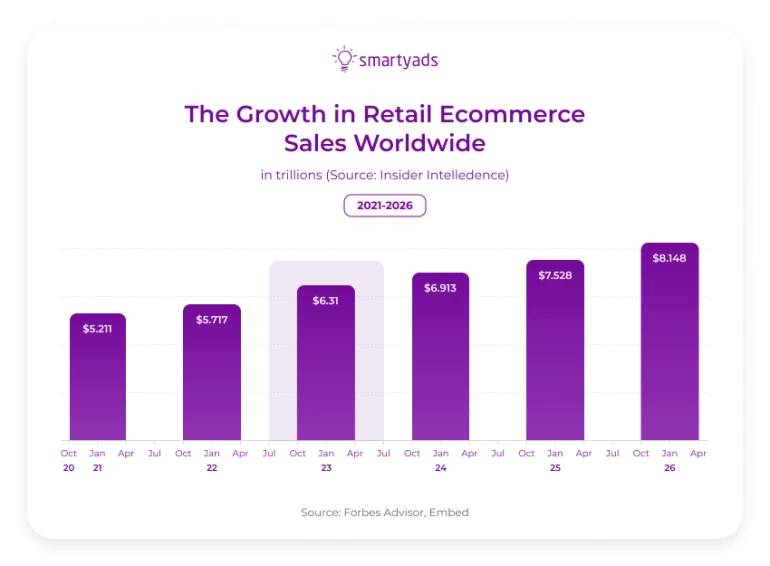
- The eCommerce industry will account for $8.1 trillion by 2026.
- Amazon's advertising platform will account for more than 37.8% of sales.
- The majority of online shoppers, a staggering 91%, utilize their smartphones to make online purchases, meaning that you must prioritize mobile optimization to create a seamless shopping experience.
- Social media commerce is forecasted to reach $2.9 trillion by 2026.
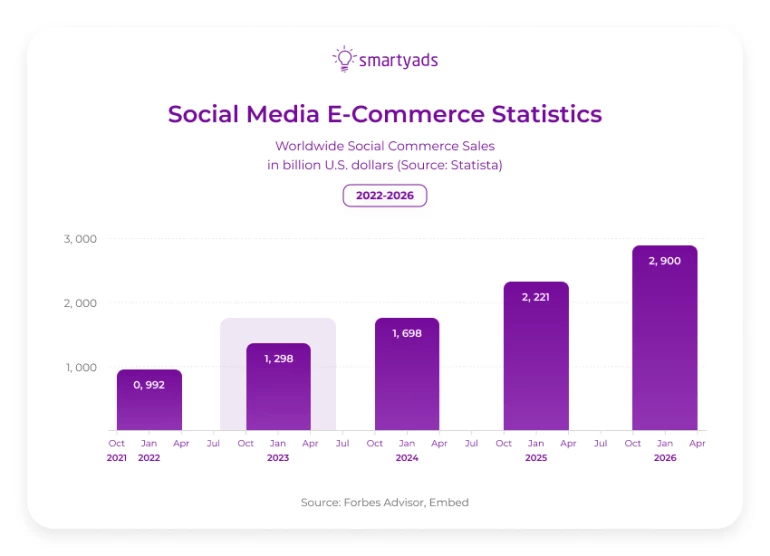
- With an almost 86% usage rate among marketers globally, Facebook reigns as the leading platform among social media. Following closely behind, Instagram claims second place with a respectable 80% adoption rate. Facebook is also the largest social media network, with over 3 billion monthly active users.
- A significant proportion of online shoppers, approximately 50%, have reported that additional fees, such as shipping and taxes, act as a deterrent during the checkout process and can dissuade them from completing their purchase. Therefore, you need to simplify and streamline the checkout process.
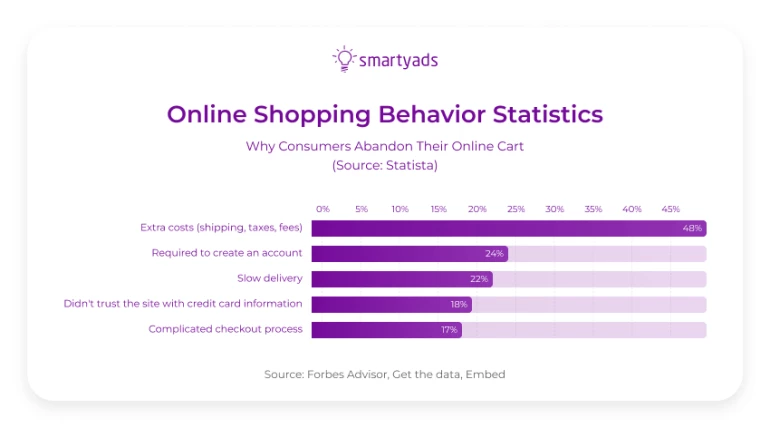
Best eCommerce advertising platforms
The eCommerce industry is growing, as well as the variety of online advertising platforms. While the already popular options are evolving, new solutions and ad networks keep entering the market to help you reach your audience.

Programmatic DSPs
Apart from launching paid social media and millennial ads and leveraging search advertising platforms, you can go one step further and benefit from programmatic demand-side platforms (DSPs).
The industry is evolving, with ad spend increasing every year.
.webp)
You will only have to set up your online advertising campaign; the rest is done automatically. The platform will find the most relevant placements, so your ad creatives will be shown to the most relevant customers.
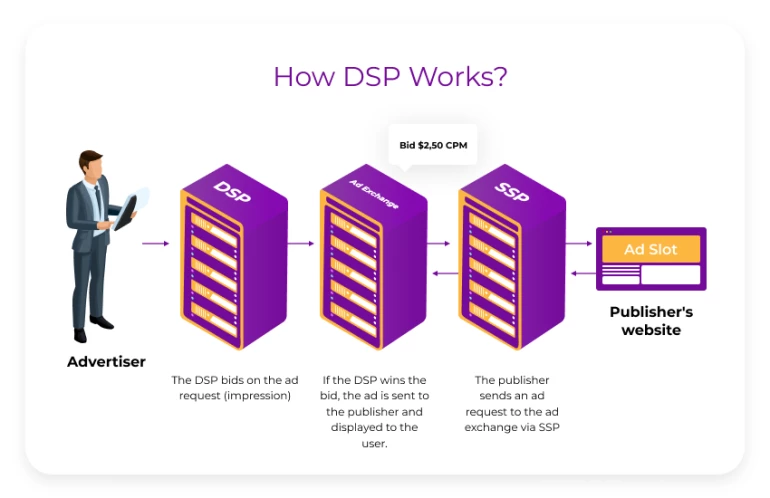
There are multiple DSPs to choose from. Let's review the benefits of programmatic advertising using the example of SmartyAds, which became the first advertising platform on our list.

1. SmartyAds
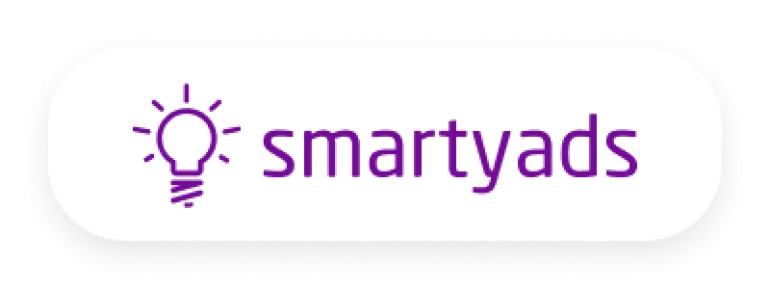
In short, SmartyAds DSP allows you to do everything that other solutions can but in a less localized way.
The platform works with many advertising marketplaces and almost all current advertising formats. It offers a range of features and functionalities to streamline the ad-buying process, improve targeting, and enhance campaign performance.
Key features and opportunities:
- SmartyAds DSP provides a wide array of targeting options to help you reach your desired audience effectively. It allows demographic targeting based on factors such as age, gender, location, and interests.
- Additionally, it provides advanced capabilities like behavioral targeting, contextual targeting, and retargeting.
.webp)
- The platform provides access to a vast pool of premium ad inventory from trusted publishers, ensuring brand safety and quality ad placements.
- The available formats include banner ads, video ads, native ads, rich media formats, and audio ads. You can reach your customers via desktop, mobile web, in-app, CTV (connected TV), and DOOH (digital-out-of-home).
- Smart algorithms will help you optimize your campaigns and reduce ad spend.
.webp)
- SmartyAds DSP offers real-time reporting and analytics, allowing you to monitor campaign metrics and make data-driven optimizations.
- The platform is intuitive to use. You only have to specify all the essential settings; the rest will be done automatically.
- With the auto-resize feature, your creatives' resolutions will automatically adapt to the ad slot.
.webp)
What to expect?
At the moment, the platform's experts are most focused on improving its safety. With the widespread use of neural networks and AI, ad fraud is also back with renewed vigor, and SmartyAds intends to keep its customers as safe as possible.
Apart from this, SmartyAds is going to further improve its targeting and retargeting functions. It already has AI and ML capabilities, but these technologies are expected to be applied in a more effective way.
You can learn more about system updates here, while this page will help you stay on top of industry news.
Alternative platforms
Now, we will review both the giants of the advertising industry and less popular platforms. The solutions are listed in descending order on the basis of the number of users.
2. Google Ads
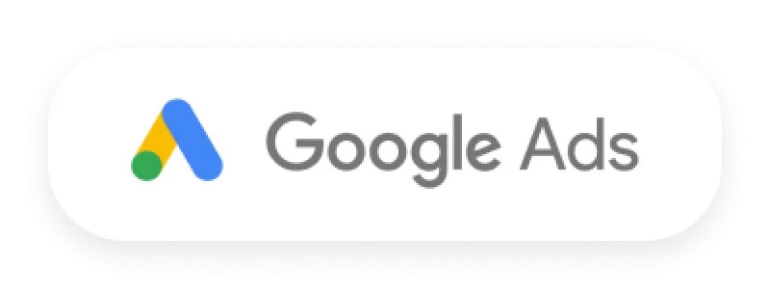
Number of worldwide visits to Google.com (as of March 2024): 85.5 billion.
Google Ads harnesses the immense power of Google's search network for advertising. With 8.5 billion searches made every day, Google is a leading search engine, allowing marketers to display their ads prominently when users' searches include relevant keywords in their queries.
This targeted approach ensures that businesses can reach potential customers, increasing the probability of conversions.
Key features and opportunities:
- The platform allows targeting based on factors like demographics, interests, and browsing behavior.
- Google Shopping Ads is a specialized advertising format that allows you to showcase your products directly in search results. A shopping ad includes an image, title, price, and other relevant product information, making it highly visual and compelling to potential buyers.
- On top of that, the platform allows the launching of search ads, video ads, display ads, dynamic search ads, responsive search ads, etc.
- Google Ads offers dynamic remarketing, a powerful feature for eCommerce advertisers. It allows you to show tailored ads to users who have previously interacted with your website or products and drive them back to your online store to complete a purchase.
- With so-called Performance Max campaigns, you can access all your Google Ads inventory from a single campaign. Powered by AI, this feature allows you to find more converting customers, increase reach, and collect more valuable insights.
What to expect?
While future developments can vary, several predicted trends for Google Ads remain.
First of all, Google Ads is expected to leverage automation and machine learning capabilities further to optimize campaigns, improve ad performance, and enhance audience targeting.
Secondly, with the growing popularity of voice assistants and smart speakers, optimizing ads and campaigns for voice search queries is expected to become more important.
Thirdly, as data privacy concerns continue to evolve and third-party cookies are steadily fading away, the platform is likely to introduce features and policies to prioritize user privacy while still providing effective advertising solutions.
3. Facebook Ads

Number of monthly active users (as of April 2024): over 3 billion.
Facebook Ads (now also known as Meta Ads) is a robust and highly effective platform that allows brands to reach a massive audience.
Success stories range from small eCommerce startups to multinational corporations, showcasing the platform's versatility and effectiveness across industries.
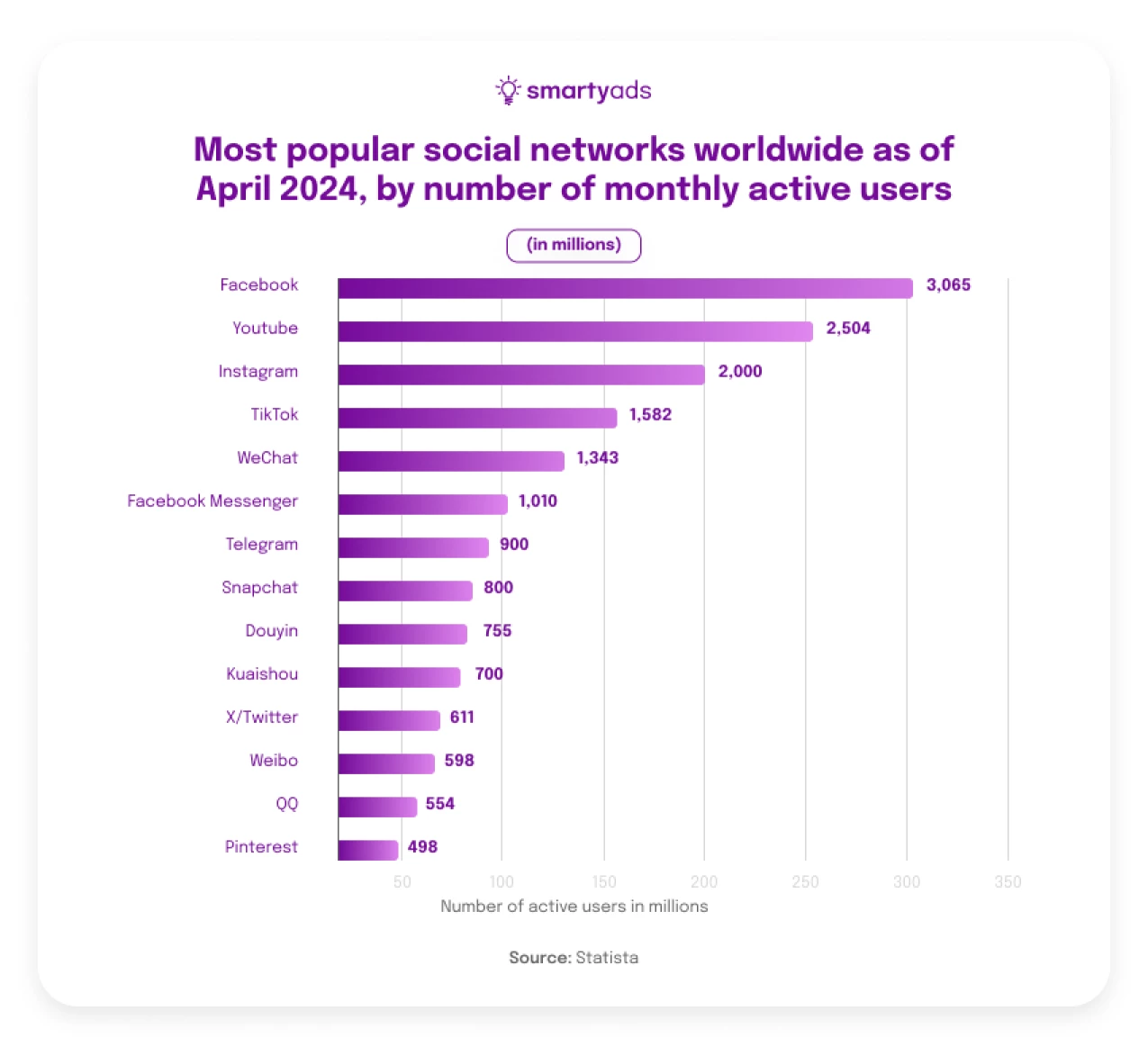
Key features and opportunities:
- You can target users based on various criteria, including age, gender, location, language, interests, hobbies, and even specific life events. This level of targeting ensures that Facebook ads are shown to the most relevant audiences, increasing the chances of conversions and return on investment.
- The platform offers a wide range of formats, including image ads, video ads, carousel ads, collection ads, and more, allowing you to demonstrate your products or services in engaging ways.
- Facebook Ads provides comprehensive analytics and insights to track campaign performance and optimize advertising strategies.
- Advanced optimization tools, such as Lookalike Audiences and conversion tracking, are here to improve ad performance and maximize results.
- Automation tools allow you to simplify the ad creation process. You can even automate your ads in full.
What to expect?
Facebook continuously updates its advertising platform to enhance user experience and provide marketers with new tools and features, while Meta is actively focusing on AI and the development of related technologies.
Some anticipated features of Facebook Ads include further improvements in audience targeting capabilities, expanded integration with augmented reality (AR) technology for more immersive ad experiences, and increased emphasis on video content and interactive ads.
Additionally, Facebook is likely to introduce new ad formats and optimization options to help advertisers achieve better results.
4. YouTube Ads
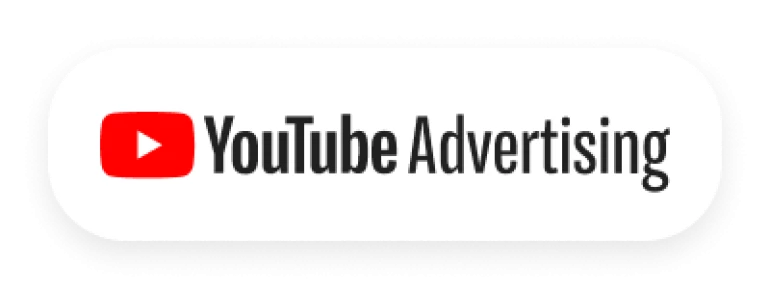
Number of monthly active users (as of April 2024): more than 2.5 billion.
YouTube Ads is a powerful advertising solution that allows you to reach a vast audience on the popular video-sharing platform.
With billions of users and hours of content watched daily, YouTube offers you an opportunity to showcase your products or services through various ad formats. Here are several marketing tricks to help you.
Key features and opportunities:
- YouTube Ads include in-stream ads that play before, during, or after videos, video discovery ads that appear in search results or related videos, and bumper ads that are short, non-skippable ads. Additionally, YouTube offers display campaigns that allow advertisers to place images or rich media ads on the platform.
- The platform also provides dynamic remarketing capabilities, enabling you to show personalized ads to users who have previously interacted with your website or YouTube channel.
- YouTube Ads offers targeting options based on demographics, interests, behaviors, and contextual targeting.
- You can measure the performance of your YouTube ads with Google Ads reporting, but there are also some additional tools available — use them to collect more insights.
- Video creation tools and templates.
What to expect?
YouTube has introduced a new purchasing model called the Cost-Per-Hour (CPH) Masthead alongside the existing Cost-Per-Impression (CPM) Masthead. With the CPH Masthead, you gain exclusive share-of-voice during specific hours, encompassing the time leading up to, during, or after priority moments.
This addition provides you with increased flexibility and opportunities to maximize your ad exposure on YouTube's platform.
Besides, with the rise in mobile video consumption, YouTube is likely to introduce new ad formats and targeting options specifically designed for mobile devices. YouTube may launch more interactive and shoppable ad formats, allowing users to engage with ads and make purchases directly within the YouTube platform.
Finally, YouTube is expected to provide more tools and features to facilitate influencer collaborations and brand partnerships.
5. Instagram Ads

Number of monthly active users (as of April 2024): 2 billion.
Instagram, a subsidiary of Facebook, has gained immense popularity as a visual-centric platform, making it a compelling choice for eCommerce advertising.
The platform's emphasis on high-quality visuals allows you to create visually appealing content that grabs users' attention and promotes your brand in a compelling manner. The specificity of Instagram makes it particularly effective for industries such as fashion, beauty, travel, and food.
Key features and opportunities:
- Instagram Ads provides various advertising formats: photo ads, video ads, carousel ads, and story ads. Photo ads are single images that allow you to showcase your products or brand visually.
- Instagram is widely recognized as a hub for influencer marketing. Influencers who have amassed a significant following on the platform collaborate with brands to promote products and services to their engaged audiences.
- Recent updates have focused on enhancing shopping functionalities within the platform, such as the introduction of Shopping Tags and the Instagram Checkout feature. These changes make it easier for you to showcase products and drive direct online sales through the platform.
- You can launch automatic targeting campaigns or specify such settings as location, demographics, and others to reach the right audience group.
- It is possible to create multi-platform campaigns for Instagram, Facebook, etc.
What to expect?
Instagram regularly introduces updates and features to enhance the advertising experience. However, in a move towards simplification, Instagram has decided to eliminate the shopping tab from its home screen.
Furthermore, several months after Facebook phased out Live Shopping and redirected stores towards Reels, Instagram has followed suit.
While shopping functionalities remain intact within these social media platforms, including posts, Reels, and Stories, Meta, the parent company, has been emphasizing a return to fundamental features and functionalities.
In terms of future developments, Instagram Ads is likely to continue exploring new advertisement formats and further integrating augmented reality (AR) technology to provide interactive shopping experiences.
6. TikTok Ads
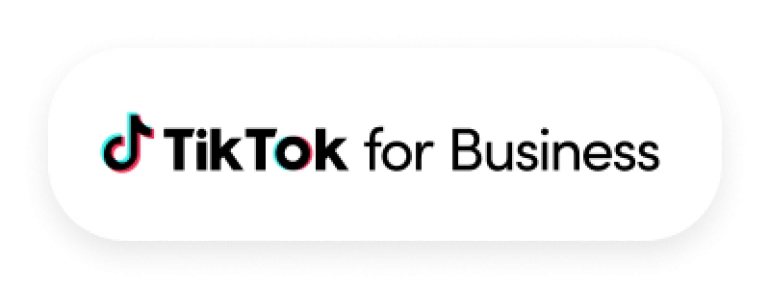
Number of monthly active users (as of April 2024): more than 1.5 billion.
TikTok has promptly emerged as one of the leading social media platforms, attracting millions of users worldwide. Its exponential growth and popularity have positioned TikTok as a prominent online advertising platform.
Businesses are recognizing the potential of reaching a vast audience and leveraging the platform's unique features to promote their products and services effectively.
Key features and opportunities:
- TikTok Ads offers various formats to cater to different advertising objectives. These include in-feed native ads, brand takeovers, branded effects, and hashtag challenges. In-feed native ads appear seamlessly within users' feeds, while brand takeovers enable businesses to occupy the full screen when users open the app.
- Branded effects allow for interactive and augmented reality experiences, while hashtag challenges encourage user participation and content creation. These diverse ad formats provide creative opportunities for you to promote your products and capture users' attention.
- TikTok's primary user base consists of younger demographics, including Gen Z and Millennials. These users are highly engaged with the platform's short-form video content, making it an ideal space for businesses targeting this audience.
- TikTok has been actively integrating shopping features into its platform, allowing users to discover and purchase products directly within the app.
- TikTok users are 1.5 times more likely to make immediate purchases after they discover something on the platform.
What to expect?
With the growing popularity of social commerce, TikTok is well-positioned to become a significant player in the advertising landscape.
Its future prospects include expanding its shopping features, enhancing targeting capabilities, and further integrating with other eCommerce platforms to create a seamless shopping experience.
7. Snapchat Ads

Number of monthly active users (as of April 2024): 800 million.
Snapchat, a popular messaging app, allows users to exchange pictures and videos with lenses, filters, and other effects.
Advertising there can be effective, but you need to consider the specificity of the audience. Users are mainly aged from 13 to 34, and the largest user group is from 18 to 24 years old. In turn, people over 35 do not tend to use Snapchat.
Key features and opportunities:
- The variety of ad types is rather standard. You can launch single image and video ads, collection ads, and story ads.
- The platform allows both creating ads from scratch and customizing templates, allowing you to save some time when necessary.
- Snapchat Ads offers a tool to convert your square or widescreen videos so that they will meet the platform's vertical format. This way, you will not have to look for additional solutions to make sure your content will look good on Snapchat.
- Targeting options include age, gender, location, and more. Additionally, you can upload your contact list, create a Pixel Custom Audience, or benefit from the Lookalike Audience feature.
- Analytics features allow tracking metrics like the amount spent, clicks, paid impressions, etc.
What to expect?
It may seem that currently Snapchat does not offer a lot for advertisers. However, its ad revenue is forecasted to grow, meaning marketers are still investing in this platform. You can try it too, but note that it can be effective only if your customers' age is relevant.
Snapchat is working on new content partnerships to provide you with extra advertising opportunities.
Besides, we can expect new features and solutions, especially those based on AI technology. The platform keeps evolving and gaining users, meaning that in the future, it can get more competitive in the advertising landscape.
8. Twitter (X) Ads
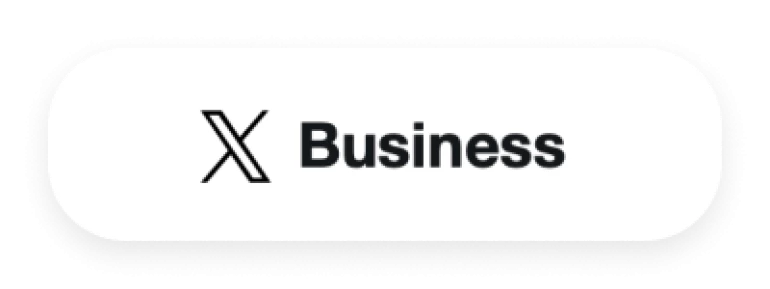
Number of monthly active users (as of April 2024): over 611 million.
Twitter is less popular than Facebook or TikTok but still has a sufficient number of users.
Therefore, you can use Twitter Ads (now known as X for Business) to amplify your reach, increase brand awareness, drive website traffic, and generate leads or conversions.
Key features and opportunities:
- Twitter Ads offers various advertising formats and placements to engage users on the platform, including collection ads, carousel ads, image ads, and others.
- Standard targeting options of Twitter Ads include demographics, keywords, devices, and others.
- Additionally, Twitter Ads allow you to target "by followers," meaning that you can reach users with similar interests to your existing followers.
- You can also leverage event targeting to align your eCommerce campaigns with specific events or moments. Note that Twitter's audience reach extends globally, allowing you to target users in specific geographic locations or languages.
- Advanced analytics features to help you optimize your campaigns.
What to expect?
Twitter announced the recategorization and rebranding of its entire ad suite after an extensive discovery and research process. The transition involved moving away from over 22 individual ad format names to a streamlined structure comprising just 5 advertising categories.
These categories come with a comprehensive set of features that can be applied across them, enhancing advertisers' campaign capabilities.
Promoted Ads: You can leverage these formats to showcase images, videos, and various ad features. Promoted Ads offer versatility, catering to different stages of the marketing funnel and enabling advertisers to maximize their impact.
Follower Ads: This format is tailored to promote Twitter accounts to targeted audiences, fostering awareness and attracting new followers.
Twitter Amplify: With Twitter Amplify, you gain the opportunity to align their ads with premium video content from highly relevant publishers, enhancing the relevance and reach of their campaigns.
Twitter Takeover: This category encompasses premium and wide-reaching placements that deliver results across the entire marketing funnel. By taking over the Timeline and Explore tab, Twitter Takeover drives substantial impact and engagement.
Twitter Live: With Twitter Live, you can broadcast their most significant moments in real time, allowing audiences to participate and engage actively.
9. Pinterest Ads

Number of monthly active users (as of April 2024): over 498 million.
Pinterest offers a unique value proposition for advertising, focusing on visual discovery and inspiration.
Unlike other social media platforms, Pinterest users actively search for ideas, making it an ideal platform for businesses to reach users with a shopping mindset.
With its visually-driven nature and emphasis on personal interests, Pinterest provides a highly engaging environment for eCommerce advertisers.
Key features and opportunities:
- Pinterest allows the creation of so-called Product Pins, which are special pins that include real-time pricing, availability, and a direct link to the product's landing page. By leveraging these Product Pins, you can provide users with a seamless shopping experience, driving them directly to your website to make a purchase.
- Pinterest also excels at visual discovery, allowing users to explore and save ideas, creating an opportunity for your business to appear organically in users' feeds and inspire them with your products.
- Pinterest Ads offers robust settings to help you reach your target audience. You can target users based on demographics, interests, and keywords and even reach users who have engaged with your brand before.
- Pinterest's user base is predominantly female, with a strong presence in categories like fashion, home decor, DIY, and food. However, the platform's audience is diversifying, with increasing male and international user bases, providing opportunities for businesses across various industries.
- Promoted Pins are paid advertisements on Pinterest that blend seamlessly with organic content, making them non-intrusive and engaging for users.
What to expect?
Pinterest Ads keeps announcing new features for advertisers, with a special focus on new formats. For instance, quiz ads can help you deliver a more interactive and unique experience and motivate people to engage with your brand.
Pinterest has also announced new eCommerce integrations, meaning that we can expect even more options to come. At the moment, the platform is enhancing its integration ecosystem with Salesforce Commerce Cloud and Adobe Commerce native apps.
10. Amazon Ads
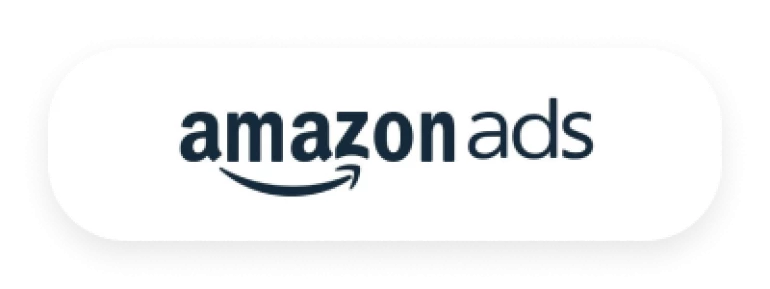
Number of active users: over 300 million.
Amazon Ads is a robust online advertising platform that allows businesses to reach a massive customer base on the world's largest online marketplace, Amazon.
With a wealth of consumer data, Amazon Ads provides powerful tools for advertisers to promote their products and drive sales.
Key features and opportunities:
- The platform offers various ad formats, including sponsored product ads, sponsored brand ads, and display ads, enabling you to showcase your products in search results, on product detail pages, and across Amazon's network of websites.
- Amazon Ads offers dynamic remarketing features, allowing you to retarget users who have previously interacted with your products on Amazon. By displaying personalized ads showcasing the exact products users have shown interest in, you can effectively re-engage potential customers and drive them back to their product pages for purchase.
- Furthermore, Amazon Ads provides personalized targeting options based on customer demographics, interests, and purchase behavior. You can deliver your ads to specific customer segments to maximize relevancy and increase the chances of conversion.
- A set of ad tech tools to support your campaigns, including Amazon Ad Server, Amazon Ads API, Amazon DSP, and others.
- Analytics and planning features, like Amazon Audience Insights, can help you optimize your advertising strategy and campaigns.
What to expect?
Amazon is likely to invest in improving its analytics and reporting capabilities, providing you with more detailed insights into ad performance and campaign optimization.
As Amazon continues to expand its presence in various countries, you can also expect more online advertising options and localized targeting capabilities in new markets.
Besides, Amazon may prioritize sustainability and ethical advertising practices, offering options for advertisers to align their eCommerce campaigns with eco-friendly and socially responsible initiatives.
11. eBay Ads
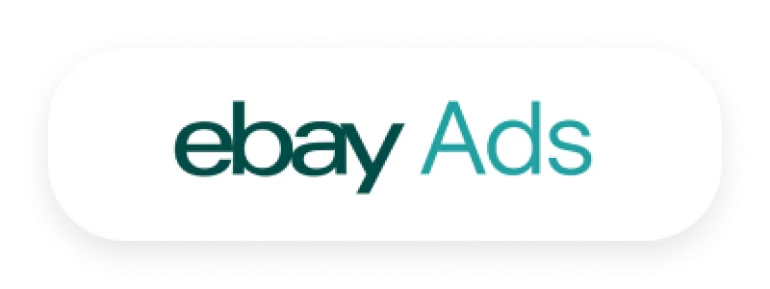
Number of active users (as of 2024): 132 million.
eBay, a global online auction, is among the most popular platforms for buying and selling products, especially in the USA. Therefore, if you focus on the US market, launching campaigns via eBay Ads is virtually a must.
The most popular product categories are health and beauty products, clothing, shoes, mobile phones and accessories, etc.
Key features and opportunities:
- eBay Ads offers several types of Promoted Listings: Standard, Advanced, and Express. The Standard option means that you pay only when the promoted product is sold. Advanced is a CPC model ensuring higher visibility. Express involves an upfront flat fee payment, and your listings will appear on similar listings' pages.
- To reach potential customers outside of eBay, you can launch Offsite Ads. These and other ads can be created via eBay Seller Hub.
- The platform has a cookieless server-to-server targeting technology, which is a great benefit when the era of cookies is coming to an end.
- You can collect some insights about your audience even before your advertising campaign is launched. eBay Ads offers some information on such categories of shoppers as Gamer Enthusiasts, Millennial Moms, Repeat Christmas Buyers, etc.
- Apart from launching campaigns on your own, you can involve eBay experts to reach even better results.
What to expect?
eBay aims to create a seamless experience for advertisers, so it regularly releases new features and updates the already existing ones.
For instance, US sellers can now benefit from AI-generated item descriptions (in most categories). The background removal tool has also been improved recently.
We can expect more AI-powered features that will help you create more effective listings faster and easier, as well as deeper integration between eBay platforms. For example, AI-generated descriptions can now be created only in the eBay app, but this potential inconvenience is most likely to be solved soon.
12. Bing Ads
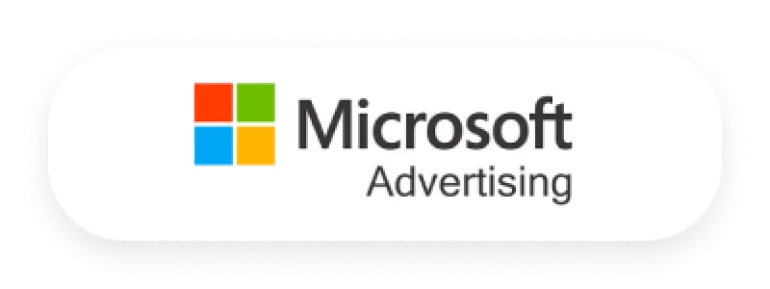
Number of daily active users: more than 100 million.
Using Bing Ads, now known as Microsoft Advertising, may seem less effective than launching Google Ad campaigns.
However, Bing still has over 900 million searches per day, meaning that you can reach your target audience there.
While Google attracts a diverse user base, covering various demographics and geographic locations, Bing is the most popular among users aged 25 to 34. It appeals more to users in specific industries like finance, technology, and education.
Key features and opportunities:
- With lower competition than Google, Bing generally offers lower CPCs, making it an attractive option for advertisers on a tighter budget. Additionally, Bing may provide better cost efficiency in certain industries due to its lower competition.
- While Bing's search engine is the primary focus, Microsoft Advertising also offers native advertising options on the Microsoft Audience Network, which includes MSN, Outlook.com, and other partner sites.
- Bing provides similar ad types as Google, including text ads, display ads, and video ads.
- The platform also offers various targeting options but with some differences compared to Google Ads. Bing Advertising has its own unique features, such as LinkedIn Profile Targeting for reaching professionals and remarketing exclusions based on site categories.
- If you have already launched campaigns on other ad platforms (for instance, Facebook or Google), you can import them into Bing Ads.
What to expect?
Bing cannot really compete with Google, which is the most popular search engine. However, the platform's experts are regularly updating it.
For instance, in June 2023, Bing Ads introduced the predictive targeting feature for so-called Audience campaigns.
Since the feature is powered by AI, we may expect more implementations of artificial intelligence. Apart from this, Bing Ads is working on bidding improvement.
To sum up
There are multiple advertising platforms to choose from to boost your digital marketing campaigns, including social networks, search engines, etc. Using them effectively, you can increase the conversion rate and income.
However, programmatic platforms can simplify the process of finding the best ad placement, so consider this type of advertising. Instead of doing everything manually, you will be able to focus on your main tasks while still driving traffic to your website.
Does SmartyAds seem to be the right solution for your eCommerce business? Contact us now!
FAQ
Make a choice with your target audience in mind — you should reach them via their preferred channels. For instance, if your customers tend to use Instagram, leveraging Instagram Ads would be a great choice. Keep in mind that using programmatic platforms is the way to optimize the process and reach your audience effectively.
The basic metrics to track when launching eCommerce campaigns are as follows: return on ad spend (ROAS), cost per acquisition (CPA), and conversion rate. It is also important to monitor the average order value and cart abandonment rate.
Follow a data-driven approach and optimize your ads according to the performance analysis. Experiment with different formats and ad copies, and conduct A/B tests when possible to identify the most effective ads. Remember that ad placement plays a crucial role in the ad performance, so consider using a programmatic solution.

![12 Best eСommerce Advertising Platforms in 2025 [Ranked & Reviewed]](/storage/uploads/2023/june/ecommerce-ad-platforms.png)


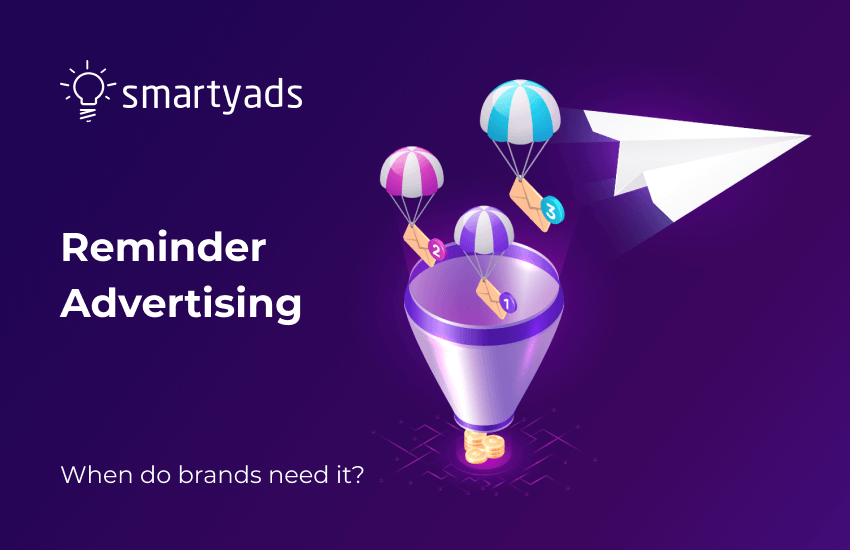
.webp)